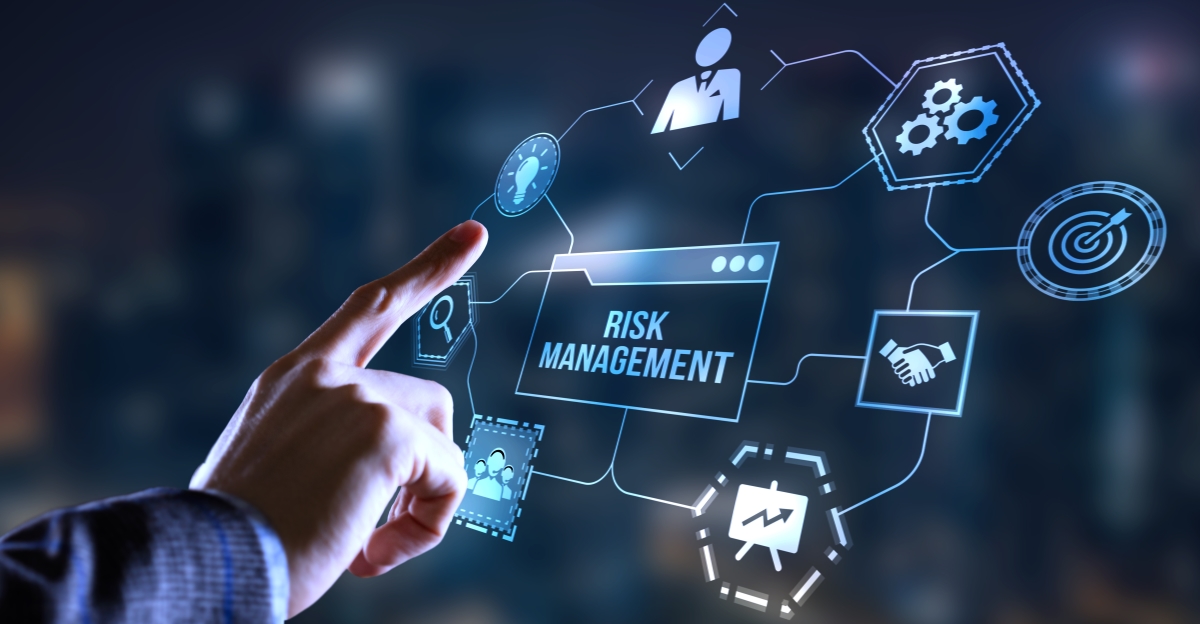Why Organizations Should Emphasize the Importance of Risk Management Now More Than Ever
Why Organizations Should Emphasize the Importance of Risk Management Now More Than Ever
Blog Article
Discovering the Significance of Risk Management for Effective Decision-Making Strategies
In the complex globe of organization, Risk Management arises as an essential aspect in the decision-making procedure. The capability to determine potential threats and possibilities, and strategize accordingly, can lead to the distinction between success and failure.
Understanding the Idea of Risk Management
Risk Management, a crucial component in decision-making, is often misunderstood or oversimplified. Risk Management entails regimented and organized approaches, utilizing data and informative evaluations. From financial uncertainties, lawful liabilities, strategic Management errors, to mishaps and natural disasters, it deals with numerous dangers - importance of risk management.
The Duty of Risk Management in Decision-Making Processes
In the realm of tactical planning and service operations, Risk Management plays an integral role in decision-making processes. It helps in recognizing possible risks and uncertainties that could affect the achievement of business goals. By tracing these risks, firms can formulate approaches to minimize their effect, ensuring company connection and security. Risk Management hence comes to be an important device in decision-making, assisting leaders to make informed selections based upon a thorough understanding of the risks included. It encourages a proactive strategy, allowing organizations to prepare and expect for possible future situations. This dramatically lowers the likelihood of negative consequences, advertising more effective and efficient decision-making strategies. Therefore, Risk Management functions as a crucial element in the decision-making processes of any type of organization.

How Risk Management Improves Strategic Preparation
In the context of critical preparation, Risk Management plays a critical duty. Launching with the recognition of prospective risks, it further reaches the application of Risk reduction measures. The role of Risk Management is dynamic however not fixed, as it requires constant monitoring and adjusting of methods.
Identifying Potential Threats

Applying Risk Reduction
Having developed the relevance of identifying potential risks, the following action is to discover Risk reduction. This procedure involves establishing and applying methods to handle determined risks successfully. It is an essential facet of calculated preparation as it improves decision-making by decreasing potential adverse outcomes. Risk mitigation strategies can range from Risk evasion, Risk transfer, to risk decrease. Each method should be tailored to the particular Risk, considering its potential impact and the organization's Risk news tolerance. Furthermore, effective Risk mitigation requires a deep understanding of the Risk landscape and the possible influence of each Risk. This understanding enables companies to prioritize dangers and designate sources properly, making certain that one of the most considerable threats are addressed first.
Tracking and Readjusting Approaches
Though Risk reduction is an essential action in tactical preparation, continuous monitoring and change of these approaches is just as essential. This continuous process permits companies to recognize brand-new threats and reassess existing ones, making certain the applied methods remain effective in the ever-changing company environment. It additionally offers an opportunity to examine the success of the Risk Management measures, enabling adjustments to be made where necessary, more improving tactical planning. Efficient monitoring and modification require using analytics and key performance indications (KPIs) to determine performance. These devices supply useful data-driven understandings that can notify critical decision-making. Therefore, surveillance and adjusting Risk Management methods is a critical component for boosting an organization's resilience and calculated preparation.
Instance Studies: Effective Risk Management and Decision-Making
On the planet of organization and money, effective Risk Management and decision-making usually serve as the columns of prosperous enterprises. One such entity is an international oil business that alleviated financial loss by hedging versus varying oil costs. In one more instance, a tech start-up prospered by recognizing and approving high-risk, high-reward approaches in a volatile market. A worldwide bank, confronted with regulative uncertainties, efficiently browsed the scenario with positive Risk evaluation and dynamic decision-making. These situations highlight the value of astute Risk Management in decision-making processes. It is not the absence of Risk, however the Management of it, that often sets apart successful firms from not successful ones. These situations underscore the important function of Risk Management in calculated decision-making. importance of risk management.
Tools and Techniques for Reliable Risk Management
Navigating the elaborate maze of Risk Management calls for the right collection of methods and devices. These tools, such as Risk registers and warmth maps, aid in recognizing and examining potential risks. Methods include both quantitative methods, like level of sensitivity evaluation, and qualitative techniques, such as SWOT evaluation. These aid in prioritizing dangers based upon their possible influence and possibility. Risk action strategies, a crucial part of Risk Management, entail approving, preventing, moving, or mitigating risks. Surveillance and regulating threats, through regular audits and reviews, guarantee that the methods stay reliable. With these devices and strategies, decision-makers can navigate the complex landscape of Risk Management, my link therefore facilitating educated and efficient decision-making.
Future Fads in Risk Management and Decision-Making Strategies
As we discover the large landscape of Risk Management, it ends up being noticeable that the tools and methods used today will proceed to develop. The principle of Risk culture, where every participant of a company is aware and involved in Risk Management, will get more prominence. These trends declare a more aggressive and inclusive method in the direction of Risk Management and decision-making.
Conclusion
Risk Management thus comes to be an important device in decision-making, assisting leaders to make educated options based on a detailed understanding check my blog of the threats entailed. Risk mitigation approaches can vary from Risk evasion, Risk transfer, to risk decrease (importance of risk management). Reliable Risk mitigation needs a deep understanding of the Risk landscape and the possible effect of each Risk. Risk response approaches, a crucial component of Risk Management, entail accepting, avoiding, moving, or mitigating threats. The idea of Risk culture, where every participant of an organization is mindful and included in Risk Management, will certainly get much more prestige
Report this page